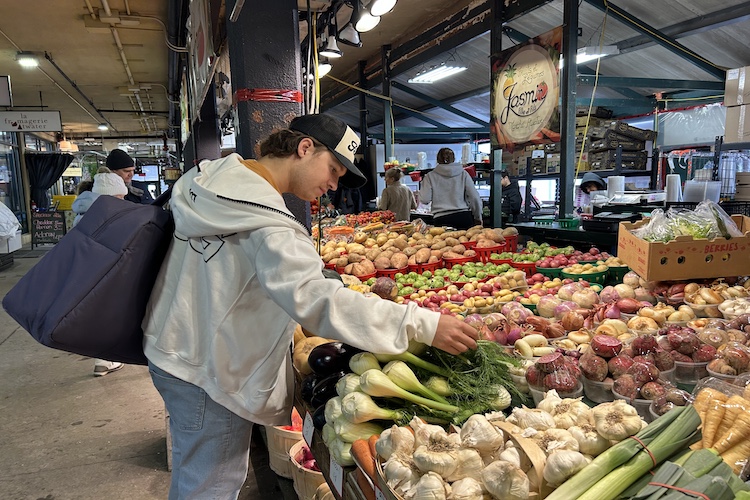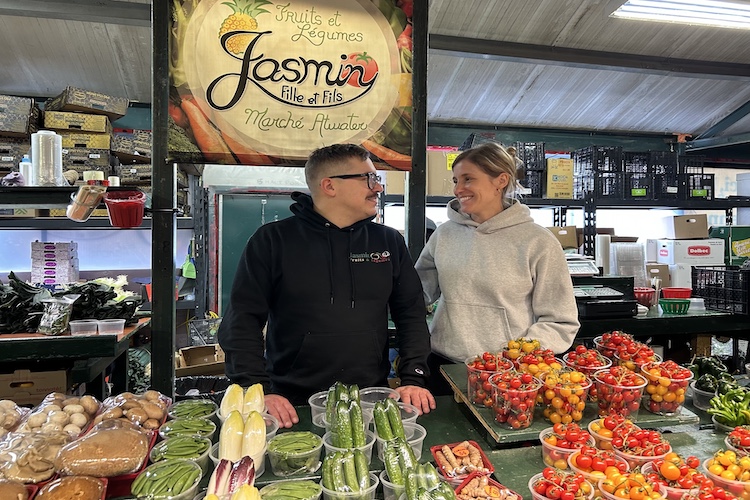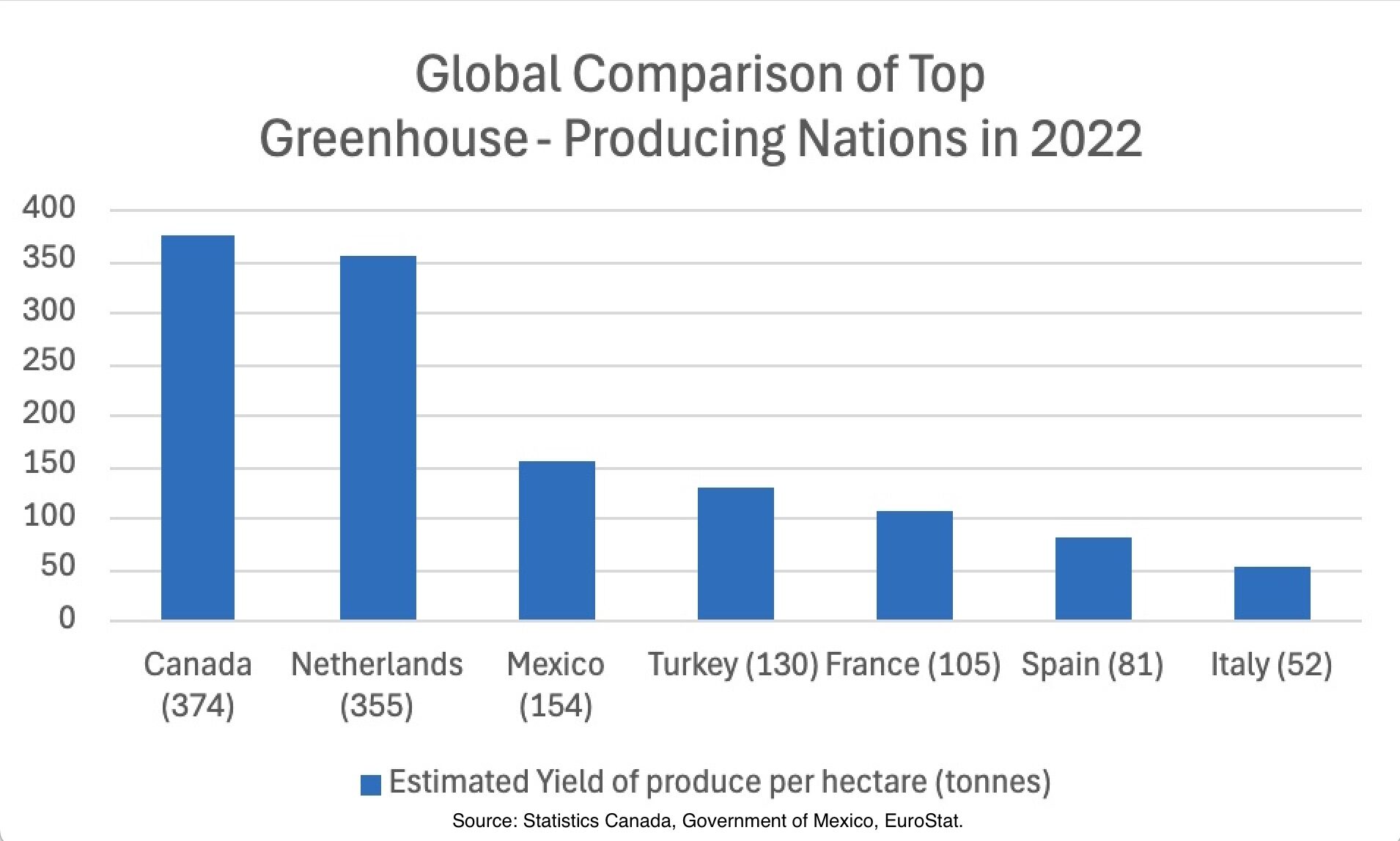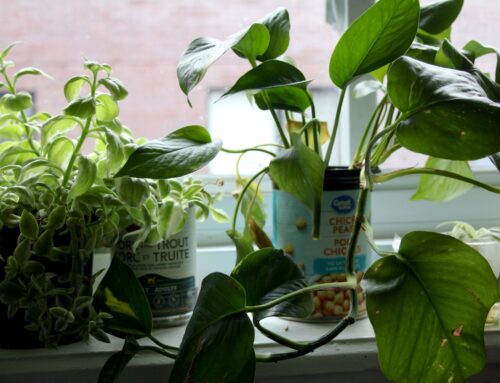BY Jacqueline Lisbona & Hannah Maione
The Atwater Market buzzes with energy as eager shoppers fill their baskets with farm-fresh produce. Among them is Tyler Stern, a private chef and caterer who swears by the quality of local ingredients.
“When I’m cooking for my clients, you can really notice the difference when you’re buying local fresh produce and when you’re buying mass-produced food from grocery stores,” Stern explains. “And my clients notice it as well.”
Stern’s business, Tyler’s Table, specializes in meal prep and private catering, relying on Montreal-based vendors for top-tier ingredients. His go-to pick? Their big Brussels sprouts, a customer favourite.

Tyler Stern reaches for a fennel as he shops for produce for his clients at the Jasmin Fruits and Vegetables vendor at the Atwater market. Photo by Jacqueline Lisbona.
A January, 2024 report from the Ministry of Agriculture, Fisheries, and Food indicates a surge in direct farm sales. More than 1,400 Quebec farms now have a presence at public markets, with hundreds more selling online and engaging in community-supported agriculture programs.
Karolane Jasmin is co-owner of Jasmin Fruits and Vegetables, she and her brother Cédérik continue a family legacy that spans 60 years. They carefully select their fruits and vegetables from Place des Producteurs and Marché Central wholesalers to ensure premium produce for their clients.
“It’s just fresher, and we buy in small quantities. We go every day, [and only] buy what we need for the day so it will be fresher,” she explains. “The difference here is that we have a relationship with the customer.”
She adds that buying locally connects consumers to their food, helping them know where it comes from and how it’s produced. Plus, it is often fresher, more nutritious, and travels shorter distances.
Over the summer, she says berries fly off the shelves, while winter brings a surge in demand for Quebec-grown tomatoes.

Karolane and Cédérik Jasmin, siblings and co-owners of the Jasmin Fruits and Vegetables vendor at the Atwater market smile at each other as they serve customers. Photo by Jacqueline Lisbona.
Between 2016 to 2021, direct farm sales in Quebec surged more than 20 per cent, with over 8,500 Quebec farms selling directly to consumers. From bustling public markets to innovative urban agriculture initiatives, Montreal’s appetite for fresh, local food is bigger than ever.
According to the agricultural producers union (UPA) vice-president Stéphanie Levasseur, consumer demand for local food continues to grow as more retailers prioritize local sourcing. The pandemic accelerated this shift, prompting the Quebec government to invest $100 million in greenhouse expansion, with a goal of reaching 80 per cent self-sufficiency in produce by 2025.
With seafood prices rising, Montreal’s urban fish farms are revolutionizing sustainable seafood. Opercule’s recirculating aquaculture system (RAS) provides fresh Arctic char while reducing environmental impact. Can urban fish farming be the future of local food security? Video by Hannah Maione
A 2023 study by the urban agriculture laboratory (AU/LAB) and the Montreal gastronomy office crowned Montreal the world capital of urban agriculture. The city now boasts 57 urban farming companies, including Lufa Farms, the world’s first commercial rooftop greenhouse.
“Our mission is to make [local food] the obvious choice,” says Emily Péloquin, communications coordinator at Lufa Farms.
Understanding that Montrealers’ busy lives make it hard to shop at several local markets, Lufa Farms simplifies the process by offering everything in one convenient basket.
Lufa Farms partners with over 400 local producers, from bakeries to cheesemakers, offering a weekly subscription service. With 30,000 to 40,000 orders per week, their five greenhouses and one indoor farm yield a diverse harvest, including multiple tomato varieties, leafy greens, and herbs.
“Cherry tomatoes are a best seller. They just taste like summer,” Péloquin says. “We pick all our vegetables to harvest so they’re vine ripened. Picking to harvest also means that we don’t have any food waste.”

Comparison of top greenhouse-producing nations in 2022, based on annual production of tomatoes, cucumbers, peppers, lettuce, and strawberries. Infographic by Jacqueline Lisbona.
Péloquin adds that choosing local food not only guarantees freshness but also strengthens communities by supporting farmers, boosting the economy, and creating jobs.
In 2024, Lufa Farms saw a 16 per cent growth in sales, driven by a 10 per cent increase in customers and an average order value increase of nine dollars.

Lufa farms Ahuntsic greenhouse where lettuce grows under LED lights and continuous watering. Photo by Jacqueline Lisbona.
To further strengthen Quebec’s agricultural sector, the federal government has launched initiatives such as the Sustainable Agriculture Plan, a 10-year strategy encouraging eco-friendly farming. Additionally, programs such as crop insurance and income security help farmers manage economic fluctuations and weather-related disruptions.
For customers looking to make informed choices, the “Aliments du Québec” label authenticates over 22,000 local products. Additionally, the UPA’s Mangeons Local application, downloaded over 60,000 times, offers an interactive map of Quebec farms, making it easier for consumers to locate and directly buy from growers.
According to Levasseur, “If each Quebec household replaced $12 of its weekly purchases of foreign products at the grocery store or restaurant with the purchase of Quebec food, this would increase demand from Quebec farmers, fishermen and food processors by a billion dollars per year.”
Levasseur says that the future of Quebec’s food autonomy is in the hands of young farmers. The Quebec Federation of Young Farmers represents over 2,000 members aged 16 to 39, providing training, resources, and advocacy. To ease their entry into the market, the UPA sponsors a stand at the Jean Talon Market, giving young farmers a platform to introduce their products to the public.
Despite the momentum of the local food movement, farmers face growing challenges.
“The change in climate is more of a challenge because we have extreme weather events that we didn’t used to see as often,” says Levasseur.
Climate change is disrupting growing seasons, bringing more frequent droughts and extreme weather events.
Jasmin agrees, stressing that unpredictable weather has caused disruptions in supply chains. “Sometimes we won’t get something for a week because of it,” she says. “Now we get produce from further away. Sometimes it’s pomegranates from Egypt. It’s very random.”
To help farmers navigate these issues, the UPA launched Agriclimat, a research initiative analyzing greenhouse gas emissions and carbon sequestration. The program equips farmers with the tools they need to adapt while maintaining high production standards.
For producers like Lufa Farms, the goal is to expand while keeping local food accessible and competitive by achieving economies of scale. Emily Péloquin envisions “bigger greenhouses that are more efficient” with “better technology and lower operating costs.”

Eggplants growing in the Ahuntsic Lufa Farms greenhouse, not yet ready for harvest. Photo by Jacqueline Lisbona.
For Tyler Stern, someone who has lived and tasted produce around the world, the message is straightforward: “In Quebec we are really lucky that we have incredible produce and to be able to support local is always amazing.”




